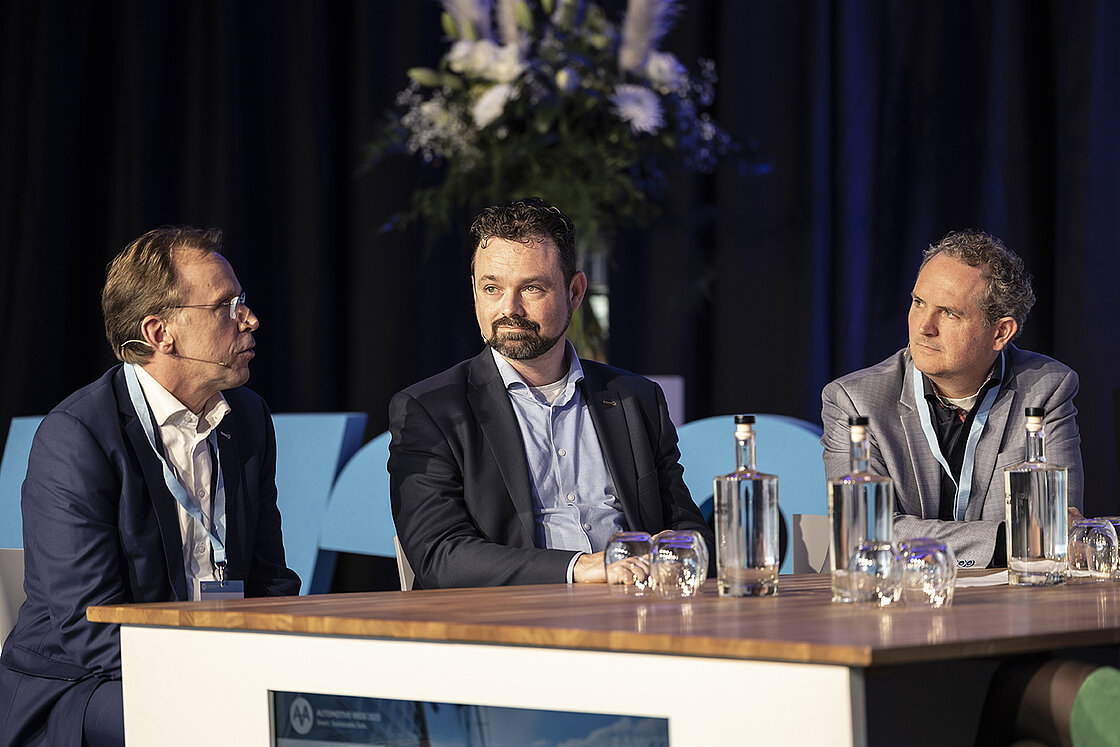Zero traffic casualties in 2030? We need to be optimistic and focused

Although most people feel that zero casualties in traffic is hardly possible, ever, there are still dozens of reasons to keep trying to get there. The Automotive Week panel on Zero Casualties did not reach the ultimate road towards this goal, but that did not mean that the panelists did not find an agreement on best practices to at least get as close as possible to zero in 2030. Most important: we need to find an attitude that is focused and optimistic.
Participants:
Magnus Granstöm (Director, SAFER / Chalmers)
Ilse Harms (Lead Human Factors, RDW)
Martijn Stamm (Market Director, TNO Traffic & Transport)
Gwen van Vugt (Senior Director Autonomous Vehicles, Siemens Digital Industries Software)
Peter Morsink (Leading professional Smart Mobility and Road Safety, Royal HaskoningDHV)
ADAS - an Advanced Driver Assistance System - seems to be the magic word for people looking to reduce the number of casualties in traffic. Still, we cannot just look at technology, Gwen van Vugt says. “Human behavior is still just as important. People not only sometimes turn off ADAS, because they do not like it, the warning systems themselves are not perfect yet either. They should understand better what the driver already sees, to get a better collaboration between human and technology.”
What could make a significant difference, Ilse Harms says, is to keep the human in mind in the design process of technological solutions like ADAS.
“The human needs to be able to use it safely. Humans make mistakes, but in fact, we do a very good job in traffic. Sure, we could be helped by technology, but never underestimate the human capabilities.”
Ilse Harms

Sweden
“Connected safety” is also what Magnus Granstöm thinks is very much needed. “We could benefit more from connected systems than we do now. It is not easy, but a lot of the technology is already there.” His home country, Sweden, has successfully experienced with public-private collaborations with the aim to reach zero casualties. “The automotive industry, suppliers, academia, and road authorities were all working together. We would have liked to involve more cities and municipalities involved, but that remains complicated because the timelines are different. But overall, the ambitions are the same, and we achieved a lot: Fatalities drastically lowered, but to be honest, we now see that the results are flattening out.” What helped in Sweden, Granstöm adds, is “not accepting that even one person would be killed in traffic.” For him, the logical next steps would be threefold: infrastructure, human behavior, and regulations.
Peter Morsink agrees about the importance of regulations, but also sees some obstacles. “For example, ADAS could help in monitoring and controlling the speed limits, but everybody driving a car knows that synchronization needs to be improved. Road signs and in-car navigation software are not always aligned, for example. There are still different standards. If we solve that problem, the acceptance of the system by its users will also improve.”
TNO’s Martijn Stamm also says that standardization is a key issue here. “In order to get the technologies accepted by the users, the whole value chain must work together.” But that is not always easy, he adds. “Standardizing for the whole industry means we have to supervise the changes without blocking innovation or safety.”
And to get there, society will need to accept that 100% coverage is unattainable, not only because every manufacturer and service provider will stick to their own processes as much as they can, but also because a lot of old, not-connected, cars remain on the road. Granstöm: “The average car is 14 years old. We see the potential benefits of standardization, but there are limits, it will take time to reach the level we aim for.” At the same time, there is still a lot of potential in standardization. Harms: “RDW is working hard on this, for example via our colleagues in Brussels who are lobbying to pursue more safety. And of course, we also push the industry to act.”
A collective task
Supervised learning is a collective task, Van Vugt knows. “We, as a society, must hold control. We know what a software-update for a car can do, but vehicles should not learn individually.” At the end of the day, all panelists want to keep the human in the loop. Stamm: “Constant monitoring is very important, to find the balance between standardization and innovation. Yes, new regulations are needed, but there are many actors who we want to keep in the loop. Looking at society’s needs, it takes constant iterations, technically as well as society-wise and on a user’s level.”


However, much standardization seems to be part of a solution, ultimately there will also remain a need for flexibility. With different kind of vehicles - manually, supported, assisted, autonomous - at the same time on the road, with various infrastructural circumstances - a highway is different from a city center - and with constantly changing user behavior, there is no ‘one-size-fits-all.’ So even if we can expect some results from ideas like separate lanes, standardized speed limit observations, and robotized driving, none of these will offer the ultimate solution.
Still, there is no reason to accept anything more than zero. So, apart from staying focused and optimistic, “it will take large trials, building up use cases and reach a systemic approach, connecting all stakeholders and technologies,” Stamm concludes.
“Whatever we do, never compromise on safety.”
Morsink
